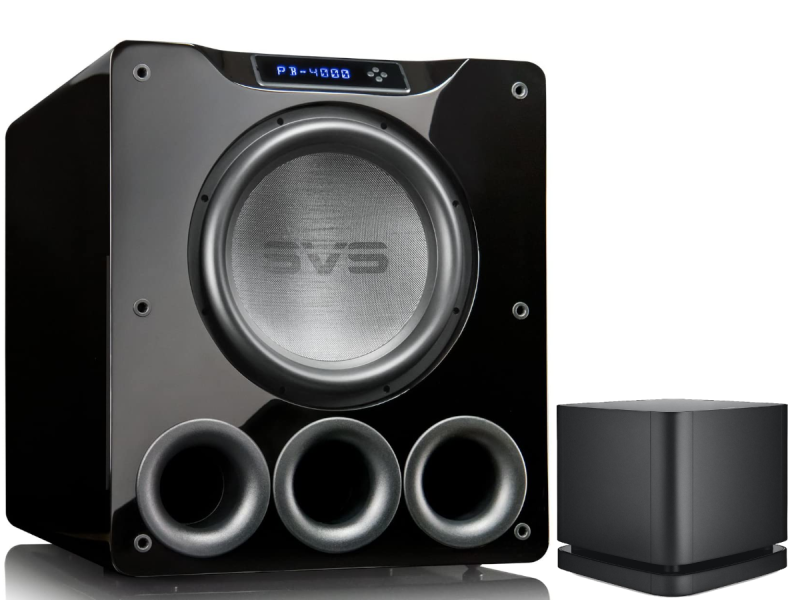7 Bad Home Theater Upgrades
Upgrading your home theater can, for some, become an obsession. The first couple of upgrades are great. One goes from using TV speakers to a soundbar. From a soundbar to a surround system. From a bass module to a real subwoofer. Taking a reflective room and adding room treatments. These upgrades all are noticeably better. Once you’ve got a full speaker system in a treated space, it is harder to scratch that upgrade itch. This often leads people to make bad home theater upgrade purchases. We call these “bad” not because they are never appropriate purchases, but because they will rarely create a meaningful improvement in most systems. Let’s begin!
1) Tower Speakers
If you already have appropriately sized speakers, getting larger ones is unlikely to make things sound any better. There may be a psychological improvement to your system, but there is little chance that there will be an objective improvement. Larger speakers can create more bass and greater volume. But if you can already hit reference level in your room, you don’t need more volume. If you have a subwoofer (or two), then you don’t need more bass. Getting larger speakers is simply a waste of money.

2) Bigger Subwoofer
Along the same vein, getting a larger subwoofer is unlikely to make any substantive difference in your system. This is assuming that you already have a subwoofer that can play down to 20Hz at reference level. The larger subwoofer simply gives you more “headroom” which is the ability to play louder than you actually need. If you don’t need it to be any louder, why pay for it? Of course, many will claim that you need to larger subwoofer because they can play infrasonic bass. This is bass so low that you can’t hear it. They say you need this because this is the bass you can “feel.” That simply isn’t true. Getting the bigger subwoofer isn’t an upgrade to your home theater, it is a downgrade to your bank account.
3) External Amplifier
There are times when you absolutely need an external amplifier. Those times are not subtle. Usually, it’s because your AV receiver can’t power all your speakers. Sometimes it is because your speakers need additional power. Unfortunately, many amplifier “upgrades” are not by necessity, but because people think that the external amp will make their speakers sound better. If your speakers can already play loud enough without distortion, buying a more powerful amp won’t make them play any better.

4) External DAC
A DAC (or Digital to Analogue Converter) is present in any device that takes a digital signal and outputs something analogue. Your AV receiver is full of DACs. Your TV likely has a DAC or two (if it has RCA outputs for sound). The idea behind this home theater upgrade is that an external DAC will somehow do a better job of converting the digital signal to an analogue one. Unfortunately for all the pundits out there, that’s rarely the case. DACs are a fairly mature technology that isn’t very expensive to integrate into devices. There are real reasons to have one, but this is to correct very obvious problems. Upgrading to an external DAC to improve already good sound isn’t likely to make a difference.
5) Curtains, Foam, or Other Ineffective Room Treatments
People are highly resistant to adding acoustic panels to their spaces. It’s a shame because they have very few problems adding other decorations. When we can get people to understand that room acoustics are important, they often look for non-panel solutions that simply don’t work. They try to put up curtains to keep sound from traveling from one part of a room to another. They add “acoustic foam” because it is smaller and cheaper than traditional panels. These solutions either flat out don’t work or they don’t work well enough to make a real difference. If it isn’t making your home theater sound better, it’s a bad upgrade by definition.

6) Diffusers
Like most of the “upgrades” on this list, diffusers do what they claim. They “scatter” sound rather than directly reflecting it. This can be very useful in rooms that are highly absorptive. Unfortunately, most if not all home theaters are woefully lacking in absorption. While they won’t actually make things sound worse, they aren’t going to improve the sound significantly. On top of that, they are more expensive than traditional absorption panels and are taking the spot where one could live. In that way, they are reducing the amount of absorption in your room, making it potentially sound worse.
7) 8k Resolution
There are a lot of reasons to upgrade your TV. Upgrading to get 8k resolution is not one of them. As we’ve talked about before, 8k resolution is complete overkill for most home theaters. If you haven’t sat in your home theater and thought, “Wow, I really can notice the pixels in my image,” recently, then you don’t need 8k resolution. If you want to upgrade your display so that you can get HDR or Dolby Vision, better blacks, or some of the latest gaming features, go right ahead. Those are upgrades you’ll notice. You may even end up with 8k resolution at the same time. But if you are upgrading simply for the resolution, then you are unlikely to experience any real difference.

Take Away
For the most part, all of these “bad” home theater upgrades are actually useful in some situations. Some people with large rooms need tower speakers, external amplifiers, and big subwoofers. When you are using a laptop or a phone, an external DAC can make a difference. Diffusers do exactly what they say and can be useful in very large spaces. The problem is when you pay good money for one of these things when your situation doesn’t call for it. Then you are spending money for no real difference.


